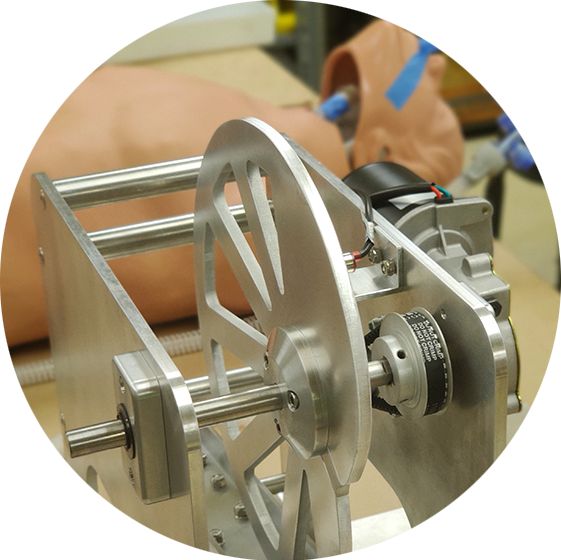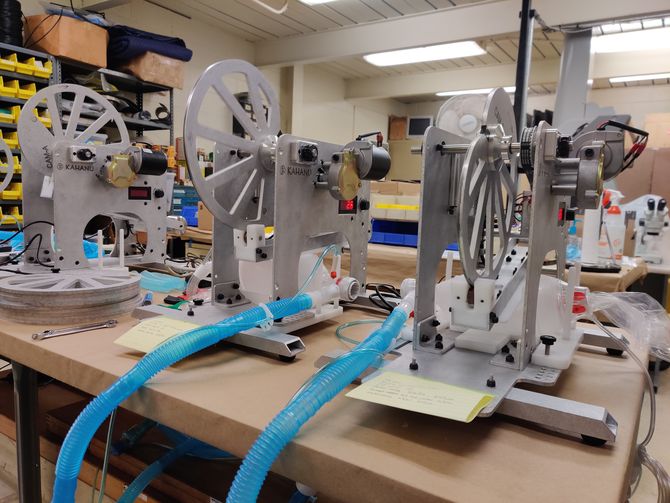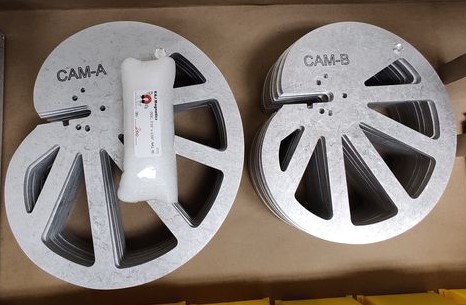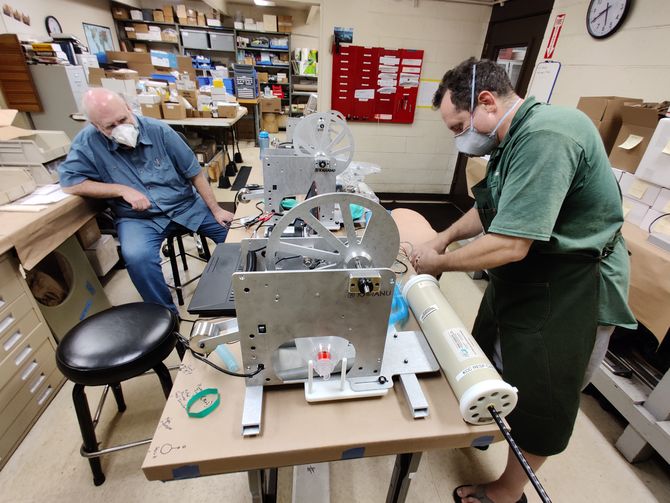Kahanu: Helping the local community to breathe
Kahanu is an open hardware project founded by a group of world-class medical and engineering experts - all with a common goal in mind - to create an inexpensive, quick-to-manufacture emergency ventilator that can be used in hospitals for patients requiring respiratory assistance as a result of COVID-19 infection.

We talked to Olin Lagon, a member of the Kahanu team about the innovative project and challenges involved with designing an emergency ventilator during a global pandemic.
A shortage of ventilators
Back in February 2020, the world was beginning to see the global spread of COVID-19 and the health effects caused by those afflicted with the virus.
As many of us are now acutely aware, the SARS-CoV-2 virus primarily attacks the respiratory system, and in many cases compromises the individual's ability to breathe. In severe cases of respiratory distress, a mechanical ventilator can be used to help the patient breathe by assisting the lungs to inhale and exhale air.
All around the world, hospitals were experiencing the same looming, and in some cases already present threat of an unprecedented number of patients requiring hospital-level care.

It was during this time that Olin Lagon (left), an entrepreneur and software engineer from Hawaii was approached by former Harvard Medical School professor, Kai Matthes who was deeply concerned about the number of medical ventilators available in Hawaiian hospitals.
At that point in time, Hawaii had approximately 500 ventilators in the state, not nearly enough to accommodate the surge in COVID cases predicted to happen in the following weeks.
Olin explains that ‘He [Dr. Matthes] had some rough ideas on using a bellows design to create a quick and easy to manufacture mechanical ventilator.’ It was here that the Kahanu project was born.
Kahanu | The Breath
Kahanu - meaning 'the breath' in Hawaiian, is a 100% volunteer-driven project. The primary goal of the project is to produce 400 emergency ventilators for Hawaiian hospitals that can be used in situations where intensive care units are overwhelmed, and there are no standard ICU ventilators available for patients undergoing respiratory failure.
After Kai initially contacted Olin, it wasn’t long until the team grew to three engineers, one technologist, and one machinist - each bringing their own unique set of skills and experiences to the project. ‘Collectively we have worked on projects at our day jobs at Apple, Google, and Tesla and created solutions used by companies worldwide like Nike, FedEx, and many more.’
Meet the rest of the Kahanu team »
Iterating on available designs
The design of Kahanu was built upon the prior innovation of a worldwide community of engineers, medical professionals, makers, and hackers.
Olin says, ‘We wanted a mechanical ventilator that could be released as open-source. There were other designs out there already like a NASA design, but we felt the microprocessor-driven systems that required complex gearing and controls would be difficult to produce in many parts of the world.’
‘We evaluated every single open-source system to pick on features that best met our needs for simplicity, buildability, and cost-effectiveness. We ended up selecting an open-source project out of Spain (OxyGEN) that used a cam based design.’
So how does Kahanu work?
The team-based their design on the Spanish OxyGen ventilator which had already been proven safe for human use through extensive animal and human testing.
The OxyGen ventilator works by using a rotating, irregular shaped metal disc, also known as a cam, that compresses and releases an Ambu bag (a self-inflatable bag) at regular intervals to simulate inhalation and exhalation.
The tidal volume, pressure, and ratio of inhales to exhales is determined by the shape and position of the cam relative to the Ambu bag. Kahanu is designed on the same principle of a rotating cam compressing an Ambu bag, as seen in the image below.

The Kahanu ventilator uses a simple motor that spins a cam which ultimately compresses the bag (inhale) and then allows the bag to naturally inflate (exhale). Credit kahanu.org.
However, rather than just directly copying and pasting the Spanish design, the team added their own unique features and modified the design for additional usability.
Olin explains 'For example, we added a movable sled to adjust the position of the Ambu bag to be closer or further away from the cam. This allowed a change in air volume and pressure without the need for swapping the cam for a larger or smaller version. Our design covers the range of respiratory characteristics needed with just two cams.'
The team also incorporated a manual hand crank into the design to allow for manual operation of the ventilator if the motor or power system happens to fail.

The two cams used in the Kahanu design. Credit kahanu.org.
Challenges of designing an emergency ventilator during a pandemic
With the world essentially entering a global lockdown, accessing testing equipment and sensors to validate the design of Kahanu was exceedingly difficult. However, during their time of need, there were many companies willing to offer equipment for free, to help the project get up and running as quickly as possible.
ADInstruments staff were approached by Micah Brodsky (VMD), who was looking for high-end gear to test the mechanical and respiratory components of the ventilator.
To help the team characterize the volumes and pressures produced by Kahanu - we provided them with two PowerLab data acquisition devices and our LabChart Pro Software for recording and analyzing the respiratory data. Find out more about our spirometry analysis software »
Olin explains, ‘Initially, we were unable to get parts necessary for measuring tidal volume and pressure over time. Fortunately, Dr. Brodsky was able to get equipment that we set up in our machine shop to collect data. We used as many data sources as we could to quickly get our system characterized. We are beyond grateful for the support from companies like yours.’
Find out more about high-performance data acquisition hardware »
A global collaborative effort

Micah Brodsky (right) characterizing the mechanical and respiratory components of Kahanu. Credit kahanu.org.
Kahanu is a story about global collaboration and resilience. By combining local talent with available resources, they were able to create an innovative solution to help combat the COVID-19 crisis.
On the subject, Olin remarks, 'Our team was 100% remote - we engineered together 7 days a week at night over Google Hangouts. And when we reached out to get help, we were overwhelmed by the support we received. The world is full of kindness.’
We wanted to thank Olin and the Kahanu team for taking the time to share their story during such a busy and stressful time. The ventilator is currently awaiting FDA approval, at which point the team will share all of their designs and resources with the rest of the world as part of the open-source hardware movement.
For more information about the project please visit the Kahanu.org website, where you can find regular updates about the project on their blog!
Hardware and software designed for life science research
PowerLab - Data with Integrity
PowerLab is engineered for precise, consistent, reliable data acquisition, giving you the reproducible data you need while meeting the strictest international safety standards.
Find out more »
LabChart - Enabling Discovery
LabChart creates a platform for all of your recording devices to work together, allowing you to acquire biological signals from multiple sources simultaneously and apply advanced calculations and plots as your experiment unfolds. Find out more »

